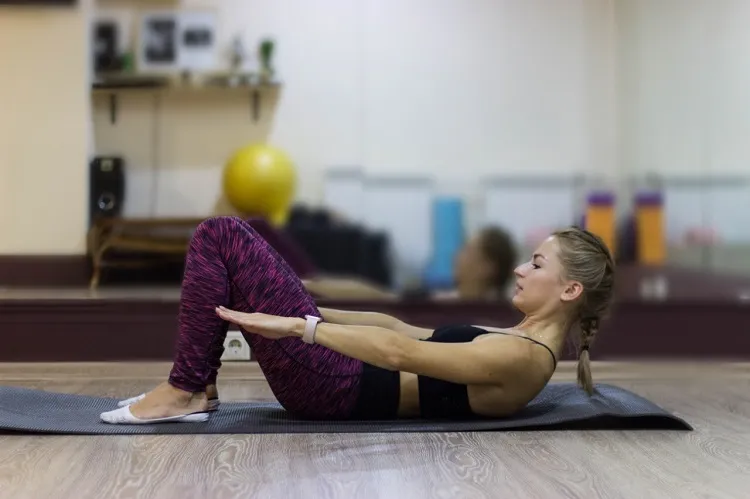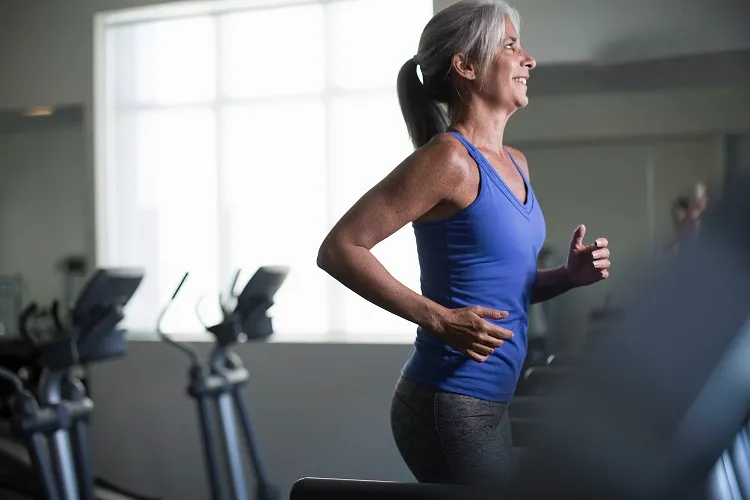Menopause is a major transitional stage in a woman’s life that brings in diverse physical and hormonal changes. While the body adjusts to these sudden shifts, keeping a healthy lifestyle with suitable workout regime becomes of crucial importance. In this regard, which are the exercises to avoid during menopause? What are the alternative training options for women over 40–50 years?
What Should You Not Do During Menopause?

In the period of menopause, the body experiences a series of alterations due to instability in hormone concentration changes. For instance, estrogen, which performs a substantial role in keeping high bone density, lowers in level, making women more vulnerable to osteoporosis. It’s essential to know which exercises to avoid during this transitional period, and to select ones that decrease stress on the bones and joints. Tense exercises like running or jumping are sometimes able to sharpen joint pain and magnify the danger of getting fractures. In addition to this, motions, which lead to over strain on the pelvic floor muscles, should be performed with caution. Menopause often cause a diminishing of these muscles, which can lead to urinary incontinence or pelvic organ prolapse. Movements that draw in tough lifting or abrupt, forceful stretch may deteriorate these issues.
Can Exercise Make Menopause Worse?

On the other hand, a properly done exercise, can be greatly beneficial in this transition period. Ordinary physical actions are good for keeping an optimal weight, promote better mood, and enhance cardiovascular condition. Though, there are given exercises to avoid during menopause, which can really deteriorate the symptoms of this period or lead to indisposition. High-intensity interval training (HIIT) might not be the best alternative for women passing through menopause. The reason is that it involves brief bursts of intensive exercise alternated by phases of rest. While this kind of workout can be effective for cardiovascular health, the sharp intensity changes might initiate hot flashes and magnify the sense of disturbance in some women. Likewise, exercises that induce too much strain on the lower back, like heavy deadlifts or squats with heavy weights, could result in back pain and indisposition. Menopause-linked hormonal alterations can influence ligaments and joints, making them more amenable to injury.
4 Exercises to Avoid During Menopause Over 40-50

Here is the short list of what hard trainings to avoid in order to keep your body and mind in comfortable condition:
- High-impact cardio: Actions like running or acute aerobic classes might reason joint pain and inconvenience. In return, try low-impact cardio variants like vivid walking, cycling, or swimming.
- Hard lifting: Strength training is necessary for this condition, but heavy lifting exercises, which strain the lower back and pelvic floor muscles, should be performed with caution. You have to use only light weights and concentrate on regulated movements.
- Deep twisting yoga: Yoga is usually beneficial, but deep twisting poses could possibly tense the lower back and pelvic region. Utilize gentler yoga training that highlights flexibility and relaxation.
- Overstretching: While hormonal changes concern ligaments and joints, overstretching can result in injury. Do not perform excessive flexibility workouts, and give advantage to regulated stretches.
Is Life Better After Menopause?

Menopause is often escorted by a mixture of physical and emotional difficulties, though it’s also a time of transition, which can fetch positive changes. Many women announce a feeling of liberation after the period, as they already have nothing to do with menstrual cycles and relevant discomfort. What’s more, the wane in hormonal changes can bring a more steady mood and bettered emotional well-being. Once the symptoms of menopause begin to quiet, a lot of women find themselves with renewed energy and spare time. When you are looking for the right way to exercise and maintain health, life can really improve after this period. Taking in activities that support bone health, cardiovascular good condition, and mental well-being can contribute to an enhanced quality of life.
What Exercises Are Good for Menopause?

As every woman have to navigate through the menopausal path, it’s vital to mutate their fitness scheme to adjust to the changes taking place in their bodies and minds. Doing exercises, which boost bone health, reinforce muscles, and support overall well-being, is of great importance. There are some suggestions for a fitted to menopause fitness program:
- Lively walking: Vivid walking is an ideal low-impact cardio training, which is useful for the cardiovascular system without stress on joints.
- Strength workout: Take in endurance training with light weights with more repeats to strengthen muscles without tensing the body.
- Swimming: This is a fantastic full-body training, which is gentle for the joints and gives cardiovascular benefits.
- Yoga and Pilates: Light yoga poses and Pilates are useful in promoting flexibility, balance, and core power without excessive tense.

Read also: Taking Care for Your Skin During Menopause: Include in Your Diet Collagen Supporting Foods
And: How to lose weight during menopause: here are the best tips to lose weight as you age!
